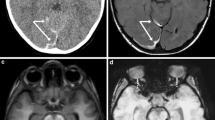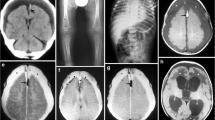Abstract.
Serious head injury in children less than 2 years old is often the result of child abuse. The role of the different neuroimaging modalities in child abuse is reviewed. Skull X-ray and cranial CT are mandatory. Repeat or serial imaging may be necessary and brain MR imaging may contribute to the diagnostic work-up, particularly in the absence of characteristic CT findings. The radiologist plays an important role in accurately identifying non-accidental cranial trauma. The clinical presentation can be non-specific or misleading. The possibility should be considered of a combined mechanism, i.e., an underlying condition with superimposed trauma. In this context, the radiologist is in the front line to suggest the possibility of child abuse. It is therefore important to know the spectrum of, sometimes subtle, imaging findings one may encounter. Opthalmological examination is of the greatest importance and is discussed here, because the combination of retinal hemorrhages and subdural hematoma is very suggestive of non-accidental cranial trauma.
Similar content being viewed by others
Author information
Authors and Affiliations
Additional information
Electronic Publication
Rights and permissions
About this article
Cite this article
Demaerel, P., Casteels, I. & Wilms, G. Cranial imaging in child abuse. Eur Radiol 12, 849–857 (2002). https://doi.org/10.1007/s00330-001-1145-9
Received:
Revised:
Accepted:
Published:
Issue Date:
DOI: https://doi.org/10.1007/s00330-001-1145-9




